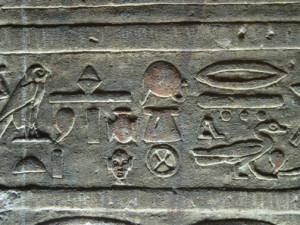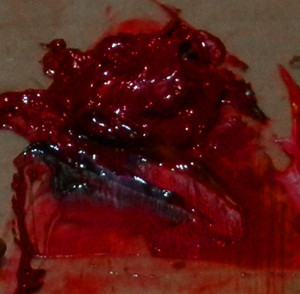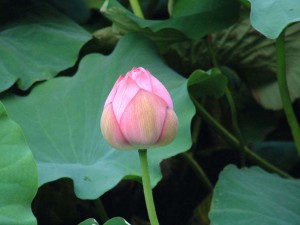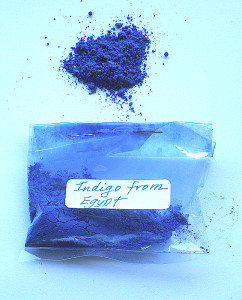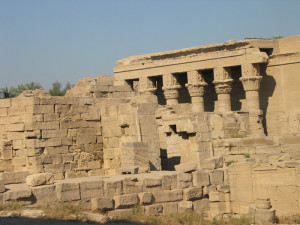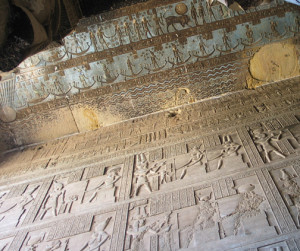I read an interesting tidbit in the Parade Magazine, Sunday Oregonian, April 19, 2009 in the Ask Marilyn column. A reader asked about carbon dating cave paintings made with paint composed of minerals. Marilyn replied that carbon dating can determine the age of artifacts made of organic matter such as cloth, bone, and wood. If painting was done in … [Read more...] about Animal, Vegetable, or Mineral?
Historical Pigments
Red Iron Oxide
Red iron oxide pigment mixed with linseed oil. A detail of my most recent project painting using red iron oxide. Temple wall at Edfu showing traces of probable red iron oxide. I will be using and researching this pigment in the coming days. … [Read more...] about Red Iron Oxide
Lotus Buds
The lotus flower image in ancient Egypt is legendary and is seen all over the temples and tombs. Initially, I feared I would not be able to utilize this splendid flower in my compositions because I did not have an adequate image to use. Then I searched wikipedia and found several that will work perfectly. The most critical issue here is the … [Read more...] about Lotus Buds
More Dung Stories
These quirky stories about pigment making from the past are completely irresistible, and Philip Ball's book, Bright Earth, is full of lively tales. The herb indigo is considered a dye rather than a pigment and is sometimes described as a lake (lac) pigment which is a commonly used word for dye. Ball quotes from a twelfth century manuscript: … [Read more...] about More Dung Stories
Dendera, The Temple of Hathor
The ceiling shown in the previous entry is within this Temple of Dendera (above) which is on the west bank of the Nile in Upper Egypt. This temple has a very long history since the earliest dynasties and structures were erected throughout the various occupations. There is a birth chapel, two Roman wells, various churches, the remains of a Roman … [Read more...] about Dendera, The Temple of Hathor
Dendera Temple Ceiling Colors
At several places within the Temple of Dendera the colors from antiquity were visible. Here you can see the remains of a bluish pigment on the ceiling. The ancient Egyptians used two blues. One is the Egyptian blue frit described in an earlier blog entry and the other azurite. It is impossible to tell which was used here without analyzing a … [Read more...] about Dendera Temple Ceiling Colors

